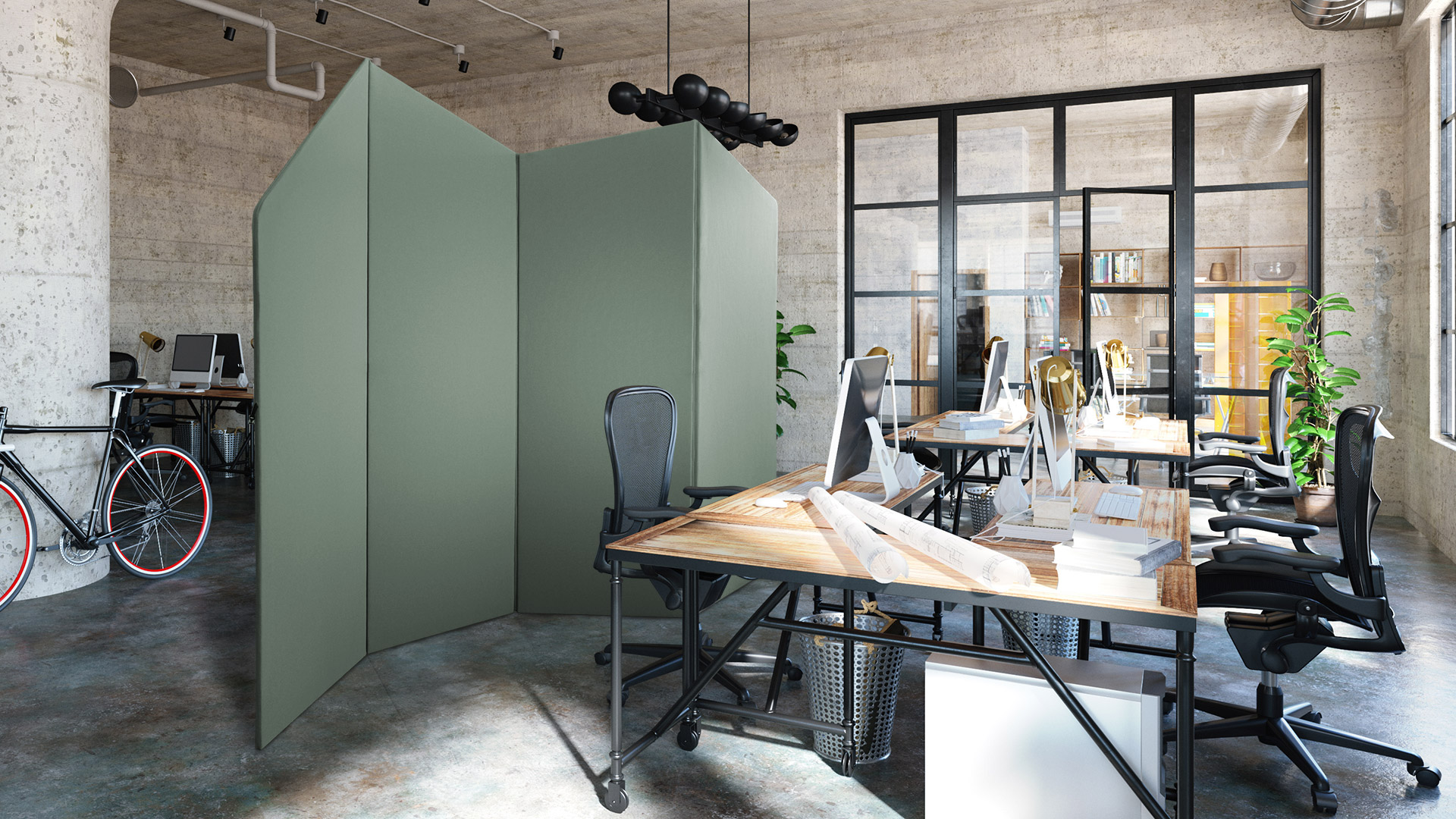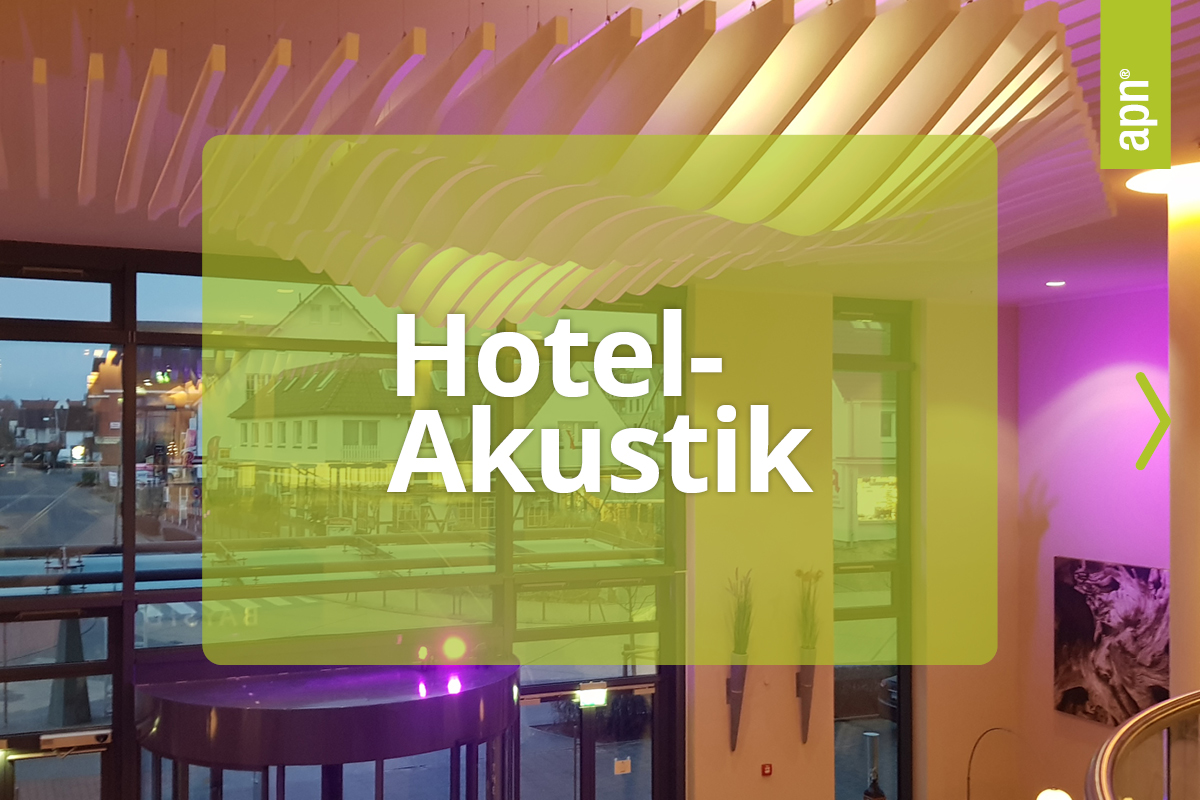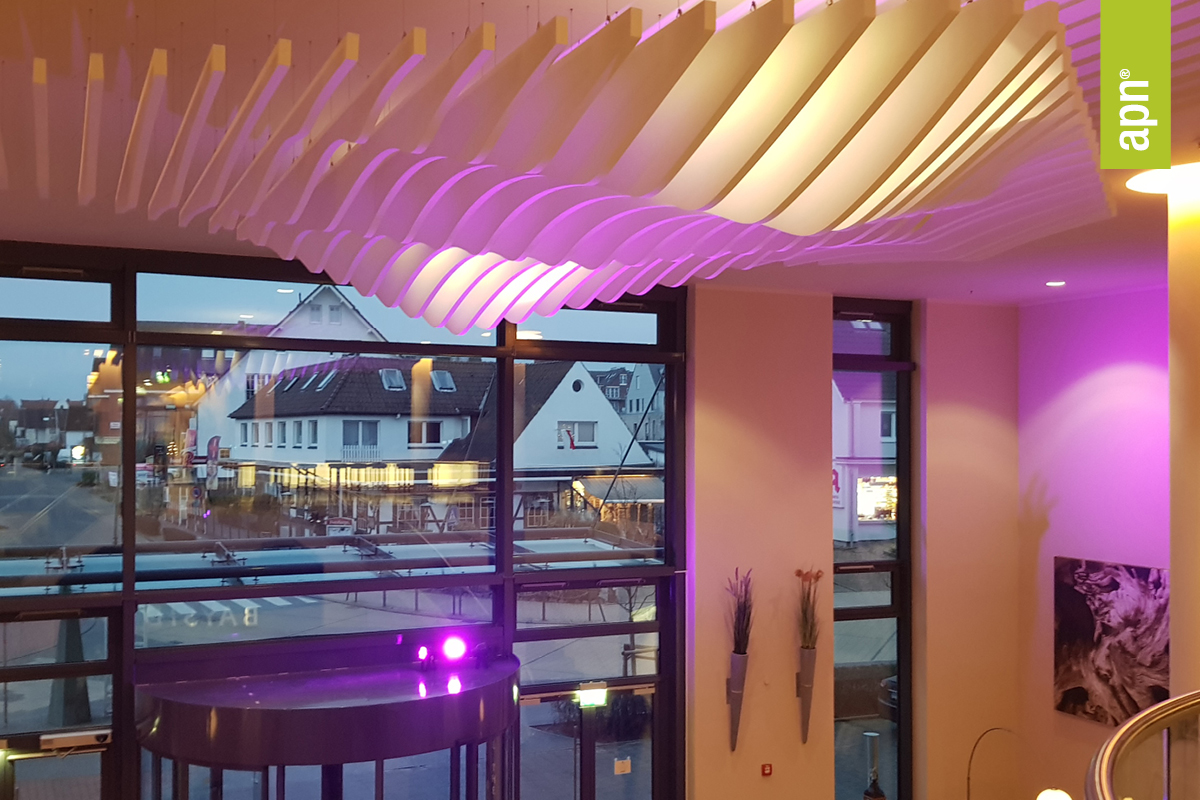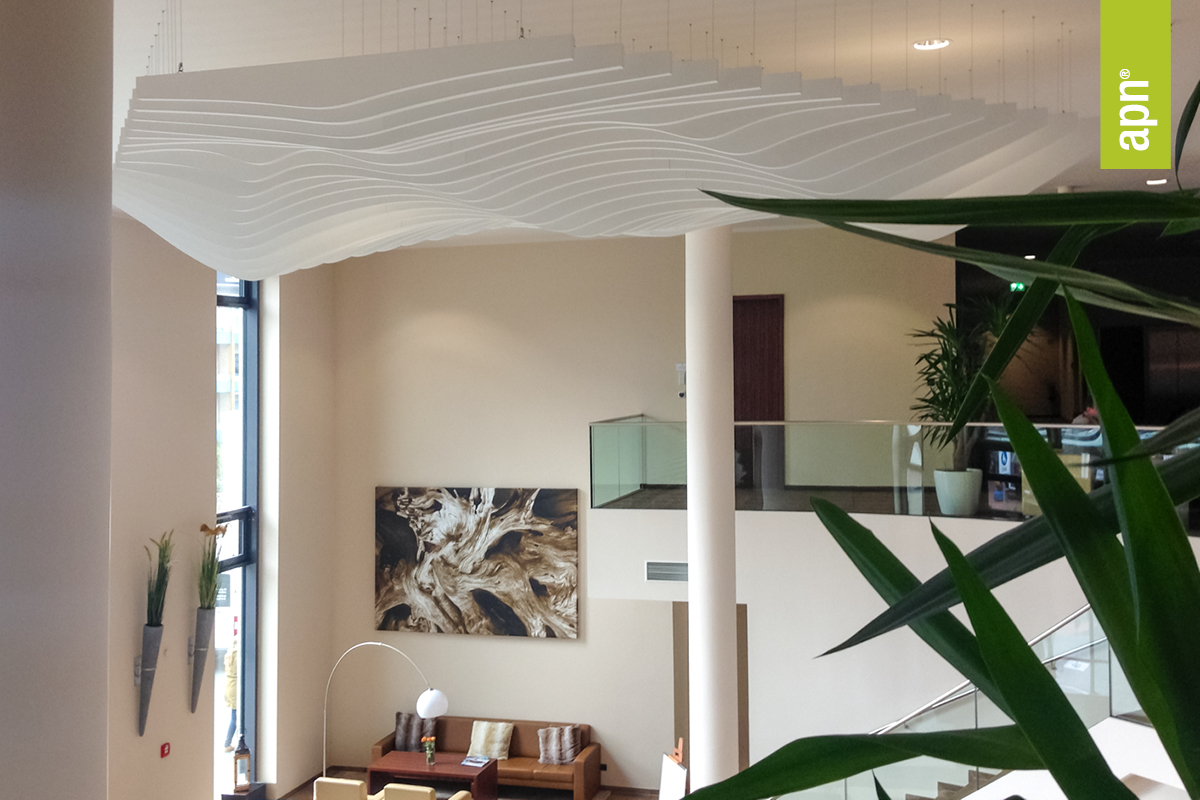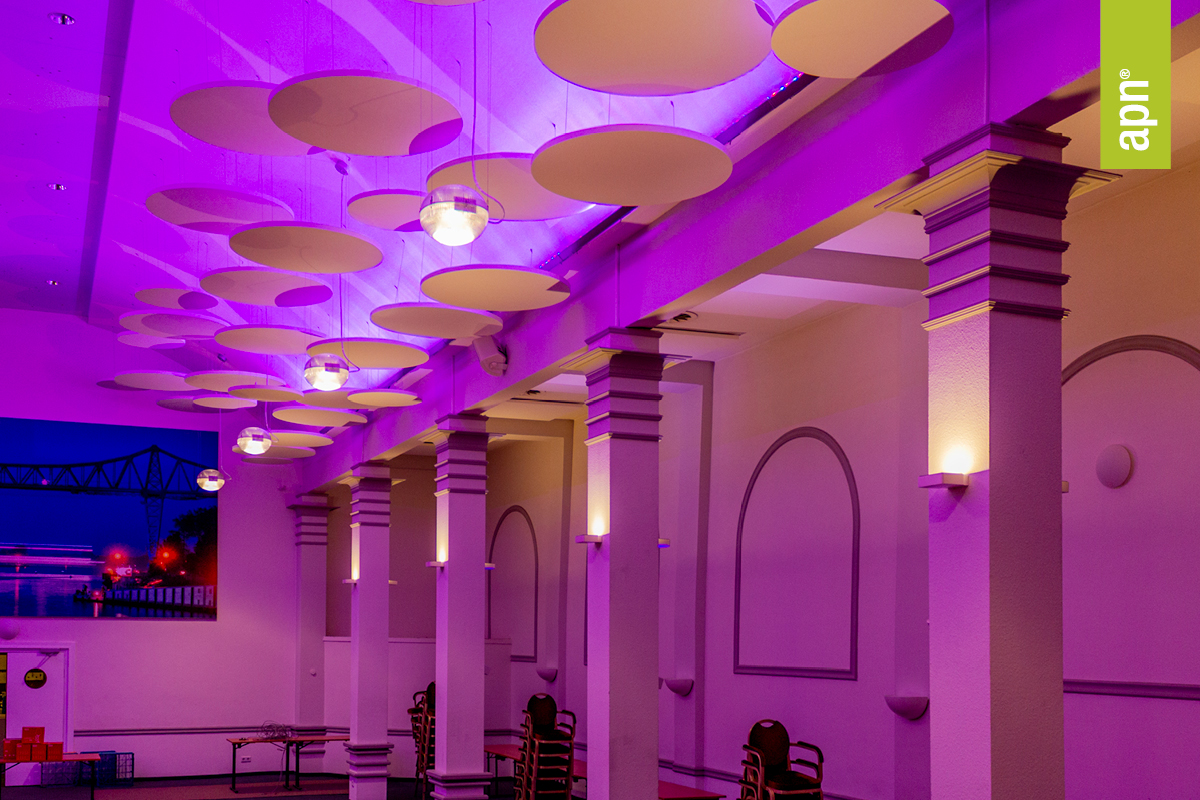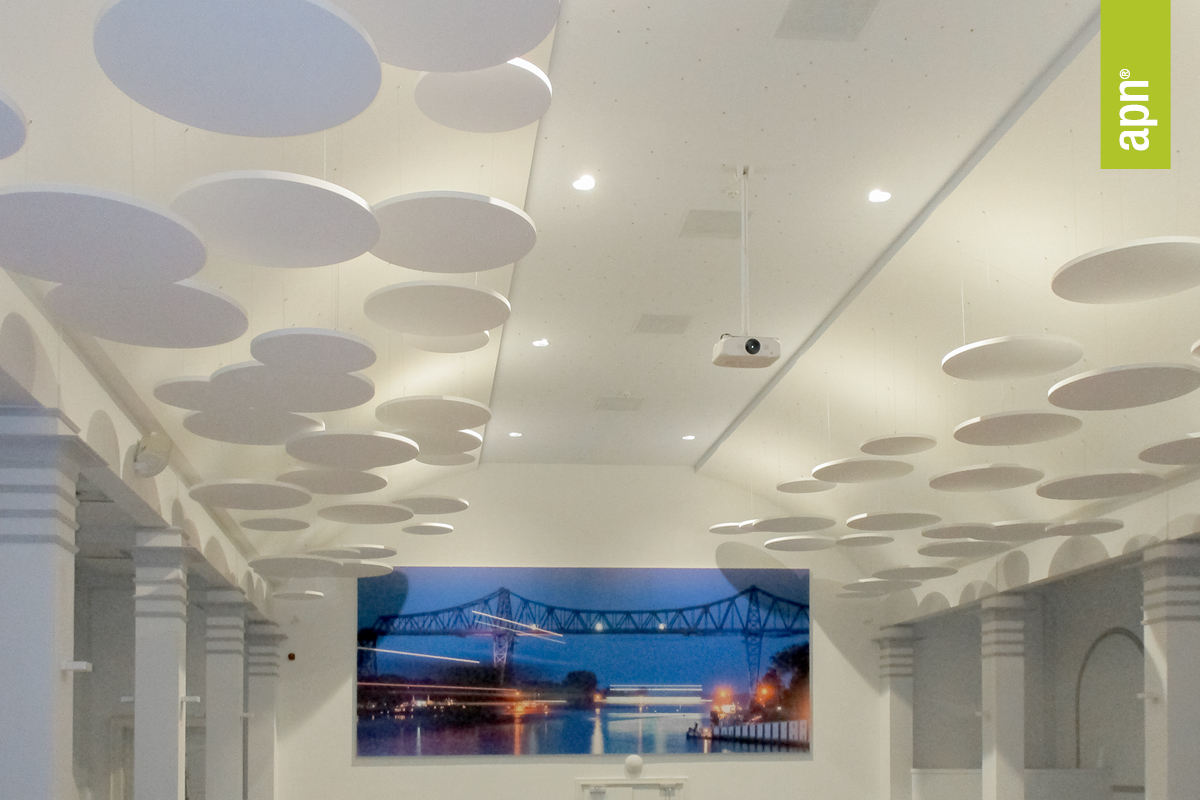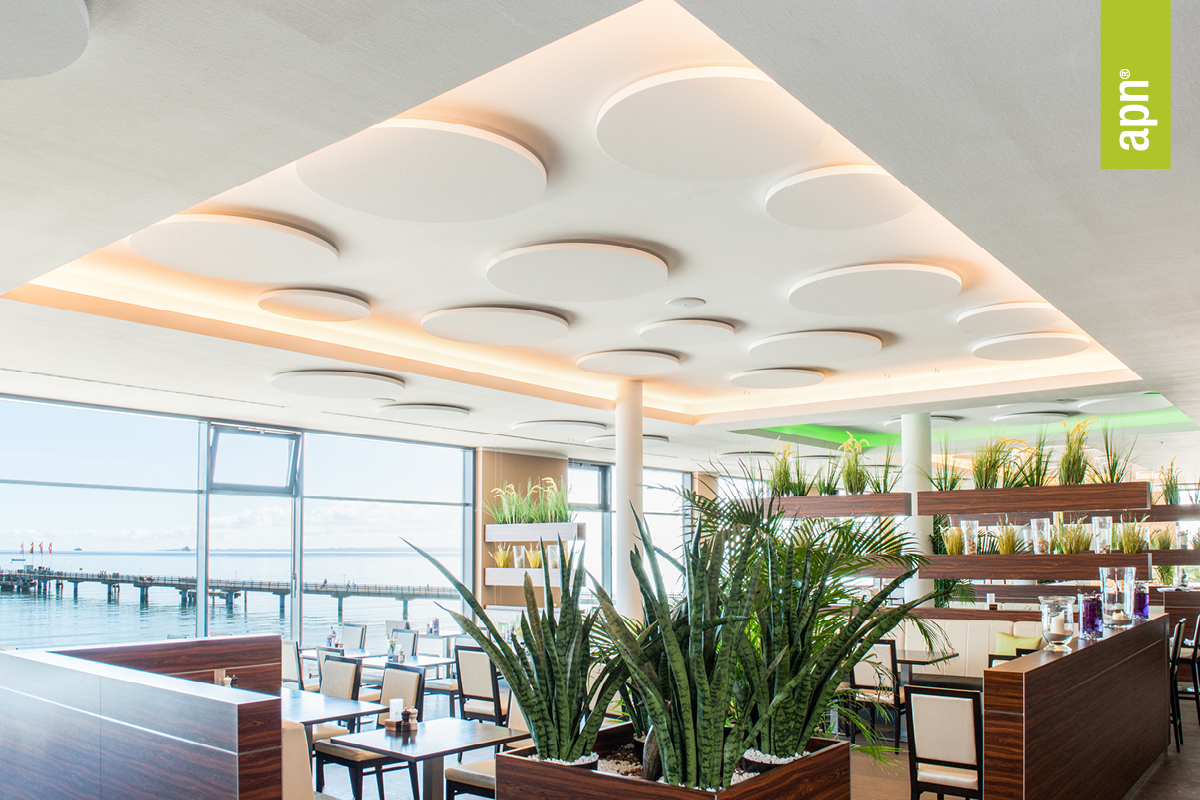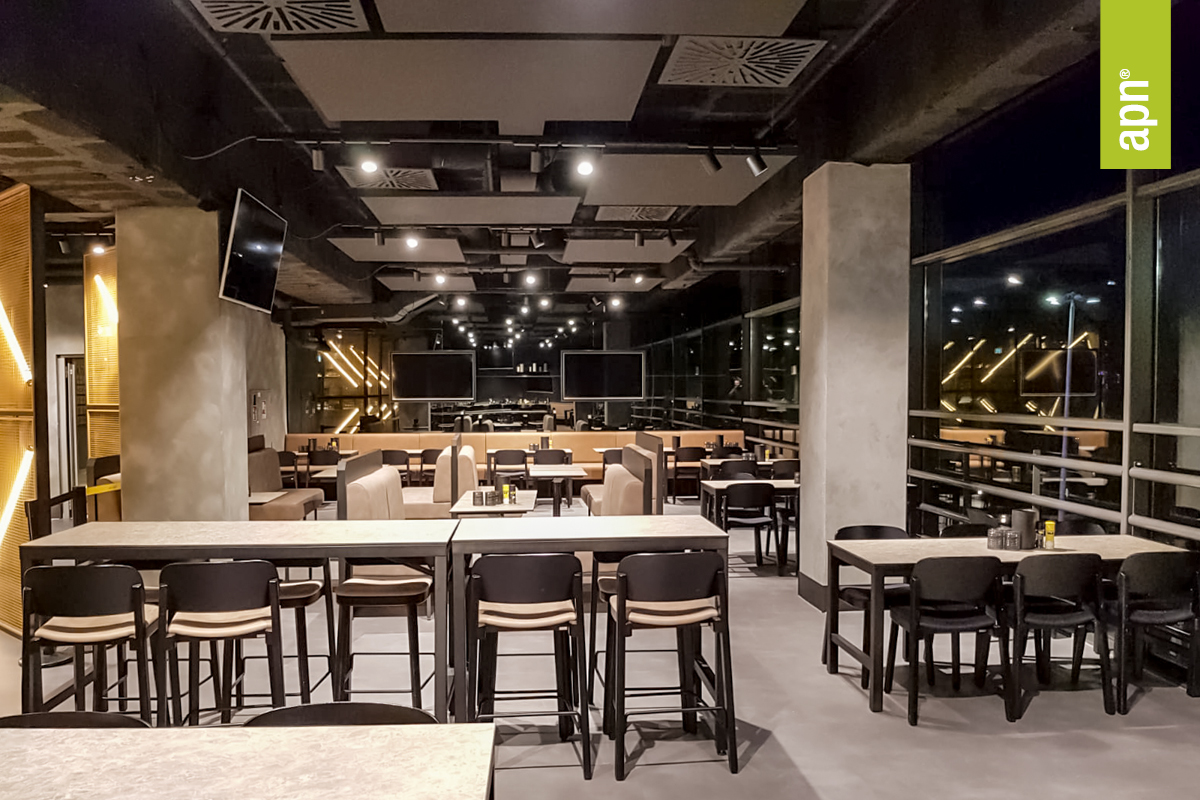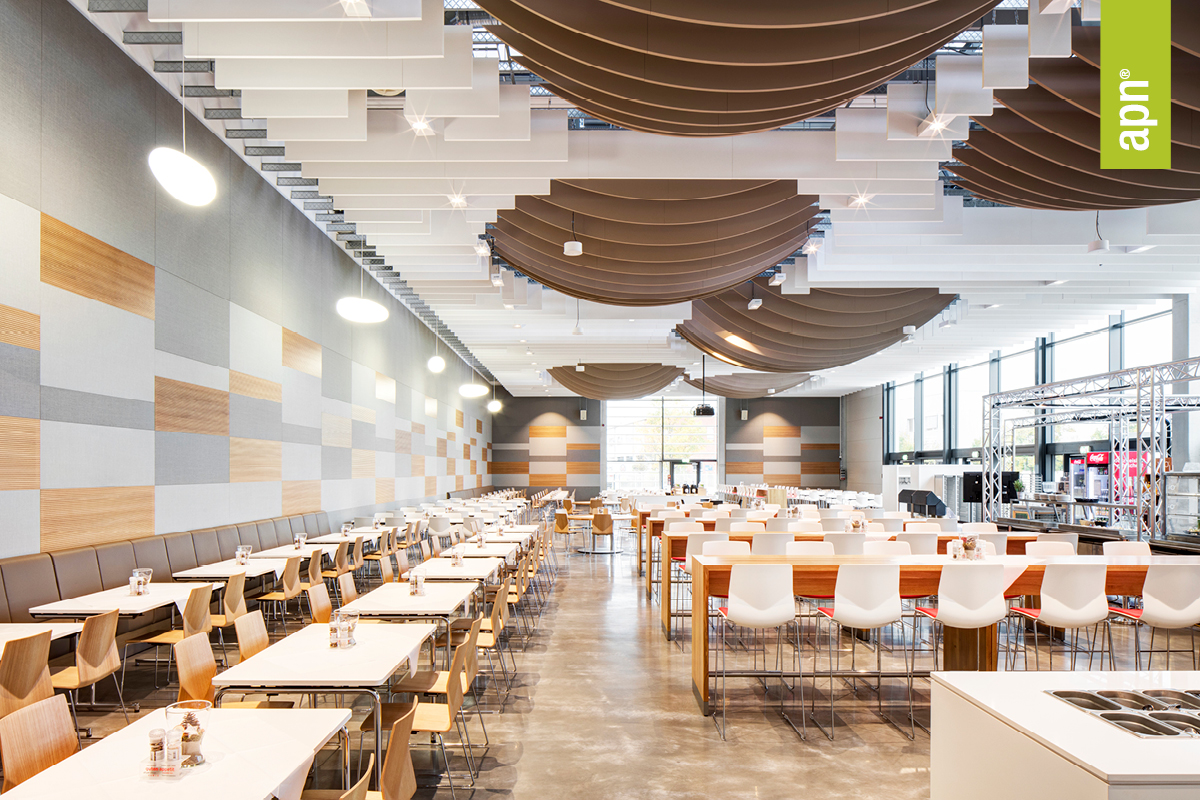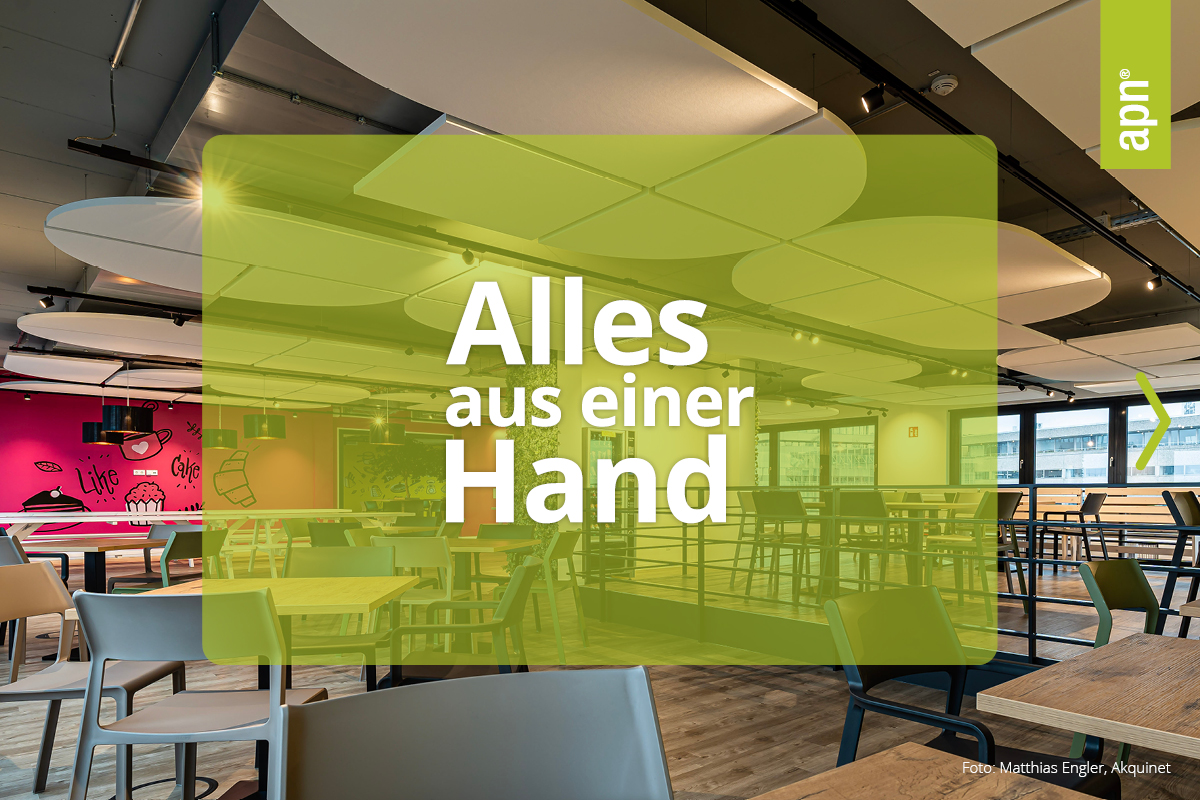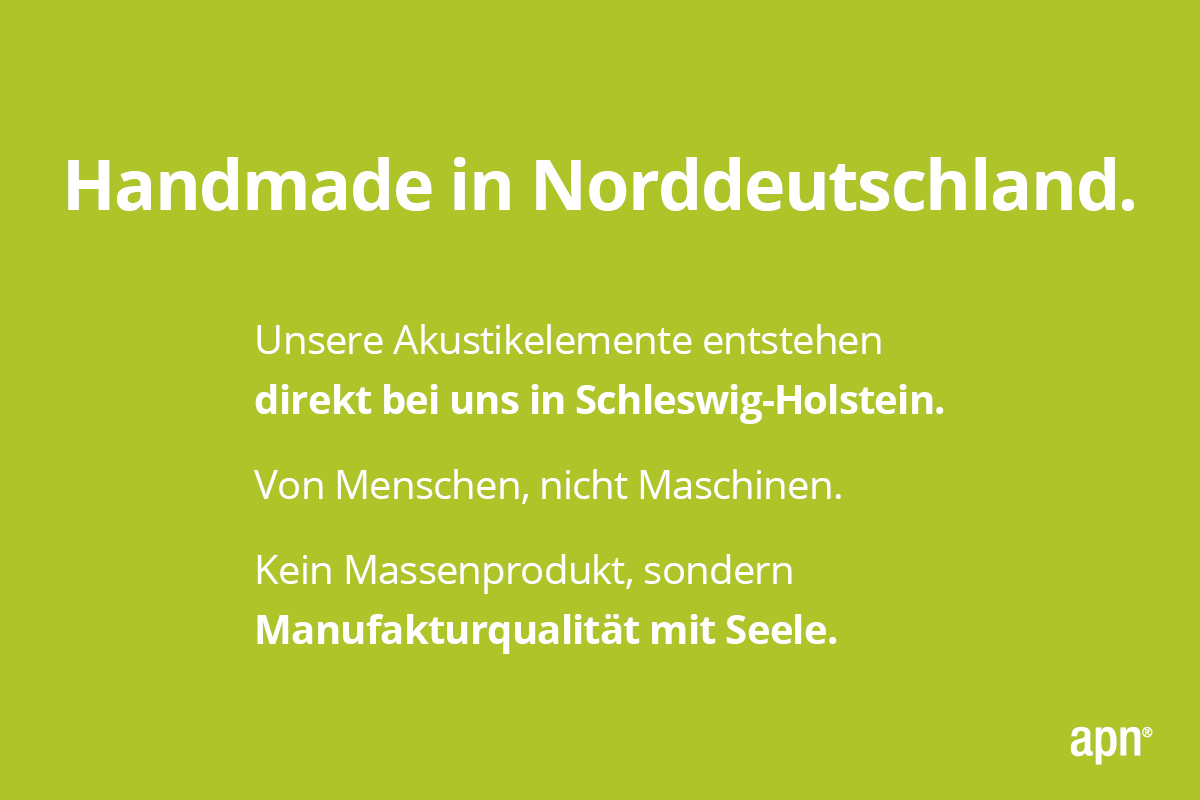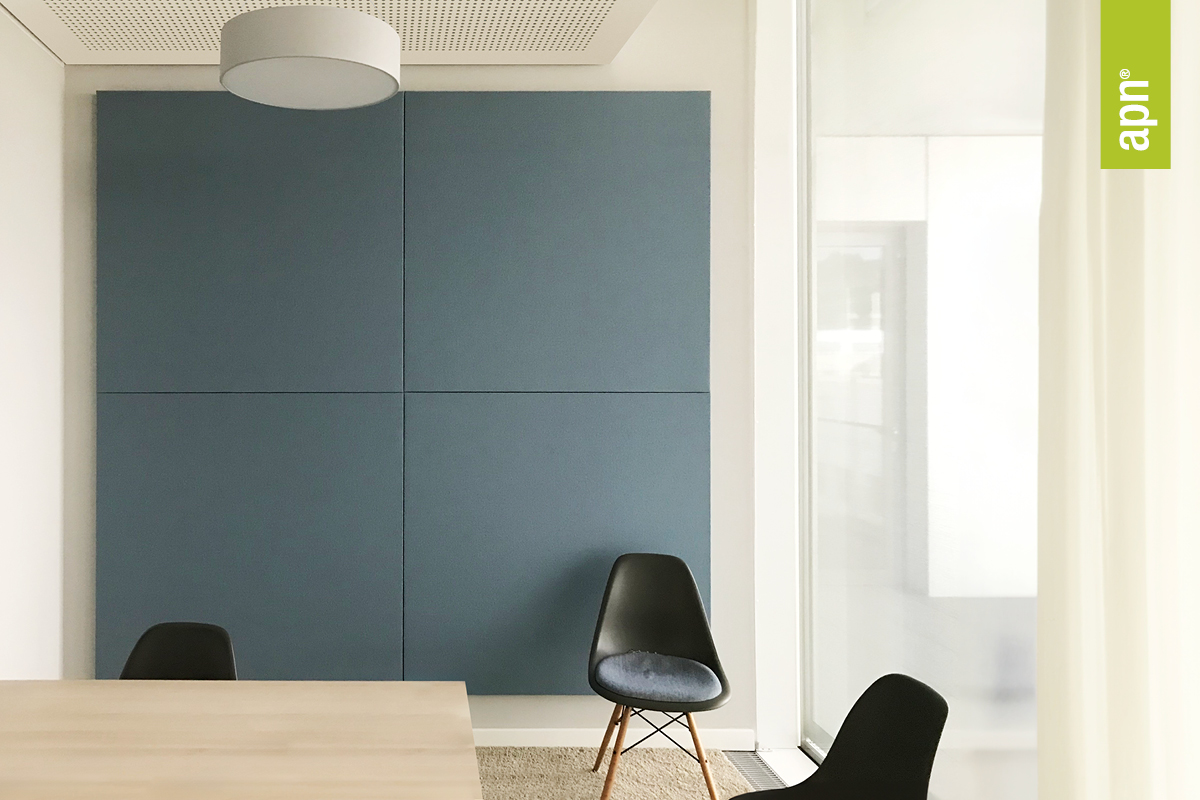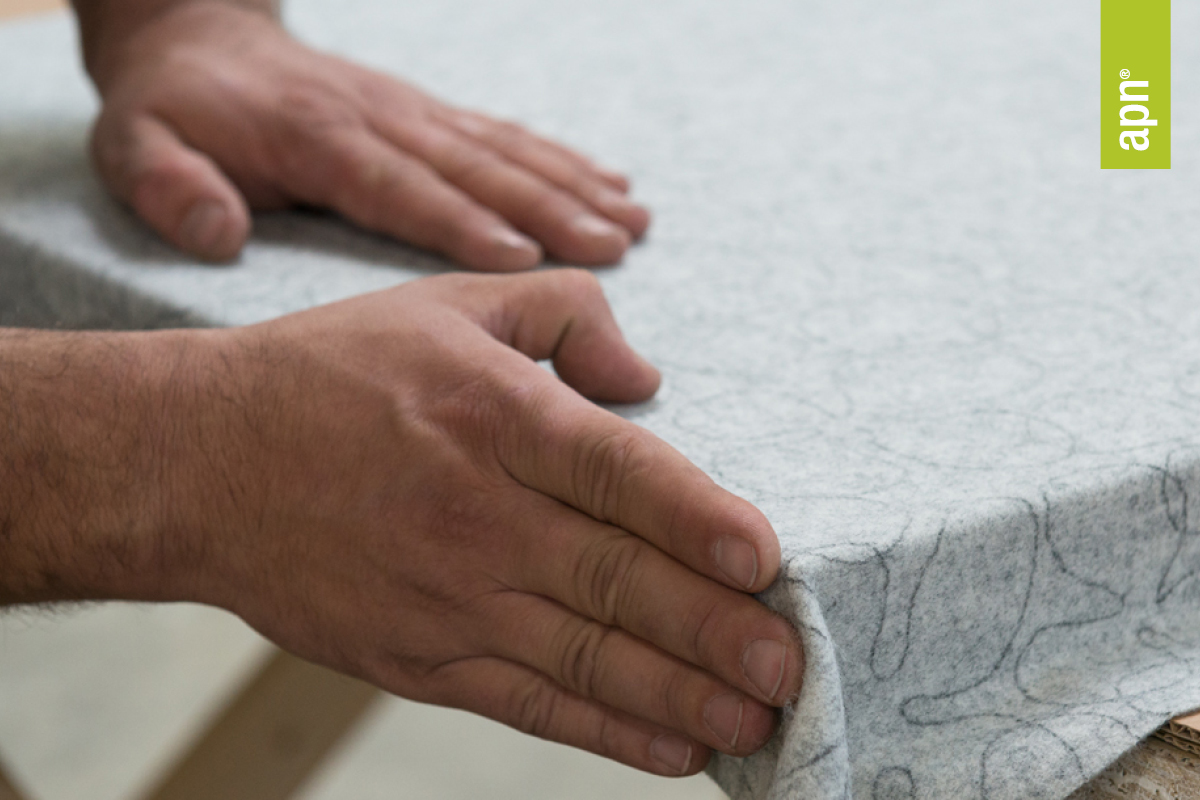Room acoustics in hotels: the often overlooked difference
Only 17 out of 860 points for acoustics?
In the criteria catalog for the official hotel classification in Germany, there are 860 possible evaluation points – but only 17 of these are for the room acoustics in the hotel. This corresponds to just around 2 %. An astonishingly low percentage when you consider how much the first acoustic impression shapes the overall image of a hotel.
Because when you enter a hotel, you don’t just perceive shapes, colors and materials – you hear the room. And what you feel directly influences your perception of comfort, quality and atmosphere.
Hotels today are more than just places to sleep
Modern hotels have long since fulfilled more than just one function:
They are places of work, meeting places, retreats and worlds of experience all in one. Today, guests expect a flexible quality of stay – be it at breakfast, in the co-working area or when retiring to their room in the evening.
Something that is often underestimated: The room acoustics in the hotel play a central role in whether guests really feel comfortable.
Loud lobby? Restless breakfast area? Echoing conference rooms? All of these have a direct impact on subjective well-being – and therefore on ratings, recommendations and bookings.
Design needs acoustics – right from the start
Modern interior design relies on open spaces, glass surfaces, hard materials and clear lines. However, it is precisely these elements that pose particular challenges for room acoustics.
This is where clever, integrated acoustic solutions are important – solutions that combine design and function without compromise. As a planner or architect, you should think about acoustics right from the start so that the room not only looks good, but also feels and sounds good.
apn®: Room acoustics in hotels – with high standards
At apn®, we combine aesthetic concepts with technical acoustic expertise – for hotels that impress in every respect. Our solutions fit seamlessly into the interior design and create acoustically pleasant rooms for guests, employees and operators.
Our claim is clear in northern Germany: Reduced. Effective. Permanently good.
Are you planning a hotel project or would you like to acoustically upgrade an existing property? Then let’s work together tocreate a room that not only looks good, but also sounds good.
Room acoustics in the catering trade
When design wants to be heard
The restaurant is full, the lighting is atmospheric, the interior is stylish – and yet many guests turn their backs on the restaurant early. What seems surprising at first glance often has a clear reason: the room acoustics in restaurants are underestimated.
If the sound of a room is not taken into account, an invisible barrier is created. Noise, reverberation and unpleasant sound reflections make conversations tiring and disrupt the emotional experience. Even the best design can lose its impact if the acoustic atmosphere is not right.
Noise reduces dwell time – and return visits
Many catering establishments lack sound-absorbing materials. Hard surfaces, high ceilings or glass fronts amplify the sound – and therefore also the noise. A well-known example of this is the Lombard effect: people speak louder the higher the noise level gets – until no one can listen anymore.
The room acoustics in restaurants not only influence how loud the room is. It determines how comfortable guests feel, how long they stay and whether they come back. Good acoustics create a pleasant atmosphere for conversation, reduce stress and ensure relaxed moments – without being visually noticeable. It is not seen, but clearly felt.
Enjoyment needs acoustic quality
In cafés, restaurants and bars in particular, acoustic quality is part of the culinary experience. Enjoyment is not only on the tongue, but also in the quiet of the room. A pleasant sound environment supports communication, creates closeness and invites people to linger.
This is why room acoustics in restaurants should be considered as part of the design concept from the outset. Not as an afterthought, but as a central component of a holistic room design.
Think of room acoustics as a design element
At apn® we develop acoustic solutions that combine both: sound quality and architectural aesthetics. Our products are modular in design, architecturally adaptable and so flexible that they can be seamlessly integrated into a wide variety of design concepts – whether as ceiling absorbers, wall solutions or free-standing acoustic elements.
Good design speaks – but it doesn’t speak. Rooms that are acoustically well thought out are not only seen, but experienced. They invite you to stay and create a real connection – between people, conversations and atmosphere.
Are you planning a new catering project? Let’s talk about how acoustic effectiveness and design standards can be ideally combined. For rooms that are more than just a backdrop – and where people want to stay.
Recycled PET – sustainable solution or marketing ploy?
“Made from 100% recycled PET” – this phrase can be found on countless products. Packaging, clothing, carpets and even acoustic elements advertise with it. It sounds like a simple contribution to sustainability – but is it?
Bottle-to-fiber: From a cycle to a dead end
What many people don’t know: Most recycled PET products come from a so-called bottle-to-fiber process. PET bottles are melted down and converted into polyester fibers – for example for textiles or acoustic materials.
The problem is that these fibers can hardly be recycled. After being used, they usually end up in waste incineration. The process therefore does not produce genuine recycling, but a kind of “downcycling” with a short useful life. There can be no question of a functioning cycle.
Recycling is not automatically sustainable
The term recycled PET is often used as a green promise – without questioning the actual environmental impact. This often results in so-called greenwashing: the impression of a sustainable product, although it was only a one-off conversion from bottle to fiber.
However, sustainability means more than just a good image. A genuine circular economy begins with the selection of the right materials, modular product design and recycling after use.
How apn® acoustic solutions does it differently
At apn® acoustic solutions, we see sustainability not as a label, but as a responsibility. That’s why we focus on materials that remain in the cycle – and on products that can be used several times. Our solutions at a glance:
- 70% genuine recycled material in our baseboards – not just bottle fibers, but recyclable raw materials.
- Modular, removable acoustic elements – made for a second, third or fourth life.
- Taking back, cleaning and reconditioning used products – for genuine reuse instead of disposal.
- No overproduction – we manufacture according to demand, not for stock.
Conclusion: Only what returns is sustainable
Recycled PET can make a meaningful contribution – but only if it is part of a closed material cycle. A product that ends up as waste after a single use remains waste – regardless of which recycling process it comes from. For us, sustainability is not a trend, but an attitude. One that starts with responsibility – and continues with real solutions.
apn® acoustic solutions – design that stays. Products that don’t disappear.
Would you like to find out more about sustainable acoustic solutions? We will be happy to advise you.
Sustainable acoustic elements from northern Germany
Why apn® relies on local production, genuine craftsmanship and responsibility from start to finish
What makes room acoustics sustainable?
It is not only the materials, but also where and how a product is made that determines its ecological footprint. At apn® acoustic solutions from Neustadt in Holstein, we build sustainable acoustic elements that are manufactured exclusively on a project-specific basis and completely handmade in northern Germany. This is not a trend – it is our claim.
Genuine sustainability instead of greenwashing
- No stock items: We only produce to order – what is needed is built. Not any more.
- No standard solutions: Each acoustic element is individual, tailored to the room, requirements and design.
- Handmade from Neustadt in Holstein: short delivery routes, transparent processes, genuine added value.
- Our own installation teams: We install ourselves – no outsourcing, no compromises.
In this way, apn® not only creates better acoustics, but also a fair product with attitude.
Circular thinking from start to finish
Our acoustic elements are not only visually and technically sophisticated – they are also designed for reuse. We avoid overproduction, use recyclable materials and take back used elements for reprocessing. For us, responsibility means developing an acoustic product that lasts – not pollutes.
Frequently asked questions about sustainable acoustic production
Why are acoustic elements from northern Germany more sustainable?
Because they are produced in the immediate vicinity, delivered without unnecessary transportation and assembled under fair conditions – with a measurably lower carbon footprint.
What sets apn® apart from other acoustic manufacturers?
We manufacture on a project basis, locally and without overproduction. Our own installation team ensures that every product is installed professionally – quality without detours.
Can I convert or reuse my acoustic elements later?
Yes – our solutions are modular and can be dismantled. We actively support reuse and take back used modules for refurbishment.
At a glance: apn® acoustic solutions
- Sustainable acoustic elements from northern Germany
- Project-related individual production instead of mass-produced goods
- Handmade in Neustadt in Holstein
- In-house assembly teams for quality on site
- Avoiding overproduction & promoting reuse
apn® stands for sustainable acoustic elements from northern Germany with responsibility – locally manufactured, modularly designed, made to last. If you want to design rooms that not only sound good, but also show attitude, we are your partner.
Find out more now and contact us directly.
Sustainable acoustic elements with the ReUse principle
apn® acoustic solutions develops sustainable acoustic elements with the ReUse principle that stay – not pollute. Our aim is to create products that do not end up as waste but can be reused. With modular construction, timeless design and up to 70% recycled content, we make an active contribution to the circular economy and the conservation of resources.
Sustainability starts with the material – and doesn’t end with its use
Many acoustic solutions are only intended for one-time use. At apn® we take a different approach: we develop acoustic solutions that can be reused, dismantled, relocated and even refurbished. For us, our reuse principle means dismantlability and modularity, the reprocessing of used elements, no minimum order quantities and no overproduction. The result is long-lasting acoustic elements with a clear design language – independent of short-lived trends.
Concrete measures for sustainable room acoustics
In order to implement genuine sustainability, we rely on the following strategies:
- Production on demand: no warehousing, no overproduction.
- ReUse by taking back: Used acoustic elements are checked, cleaned and re-covered by us.
- 70% recycled material: Our baseboards are largely made from recycled material.
- Upcycling instead of disposal: Production waste is processed into new products.
Our materials are certified to the highest environmental standards, including Blue Angel, VOC A and CE – for maximum safety, quality and environmental compatibility.
ReUse acoustic elements – Made in Germany
As a manufacturer from Germany, we offer companies, planning offices, architects and building owners throughout the DACH region – and beyond – sustainable acoustic systems that are economically, visually and ecologically impressive. Whether offices, educational institutions, restaurants or public buildings – our acoustic elements not only improve room acoustics, but also your sustainability balance.
Acoustic elements for sustainable building
Our solutions stand for a new understanding of product responsibility:
For us,design without an expiration date means: reusable, durable, certified acoustic elements that grow with you and don’t disappear – sustainable acoustic elements with the ReUse principle.
Plan sustainable room acoustics now – with apn® acoustic solutions.
Sustainable acoustic solutions for every budget
Because good room acoustics are not a luxury
Good room acoustics are not an extra. Not a luxury. And certainly not a question of money. It is a conscious decision – for more concentration, more well-being and more sustainability in everyday life.
Whether open space, conference room, classroom or practice – wherever people meet, you need acoustic concepts that work. And not just technically, but also economically.
Three solutions – one claim: sustainability and quality
At apn®, we develop sustainable acoustic solutions that can be customized – depending on the room, requirements and budget. We offer three product lines that have one thing in common: clear function, well thought-out design and responsible use of resources.
- baseline: Reduced to the essentials, efficient in use. Less choice, full effect.
- classic collection: Our all-rounder with top performance, many colors and fabrics.
- pre edition: For all those who love style as well as style. High-quality materials, maximum comfort.
Sustainability is standard for us – not an add-on
Sustainability is not a label, but our aspiration at every step:
From the selection of tested materials to long-lasting product quality and regional production. We think acoustics holistically – and with an eye to tomorrow.
Conclusion: Good acoustics adapt – even to the budget
If you want to design rooms that work, you shouldn’t save on acoustics – but you don’t have to overinvest either. At apn® you will find sustainable acoustic solutions that suit your requirements AND your budget.
Whether it’s a nursery or creative room, treatment room or meeting lounge:
Still is the new loud. And sustainability simply sounds better when it’s part of the solution.
Do you have a project? We are listening.
